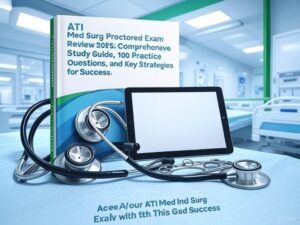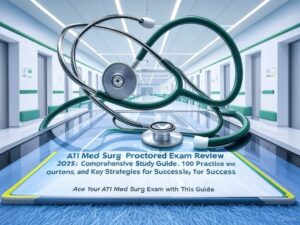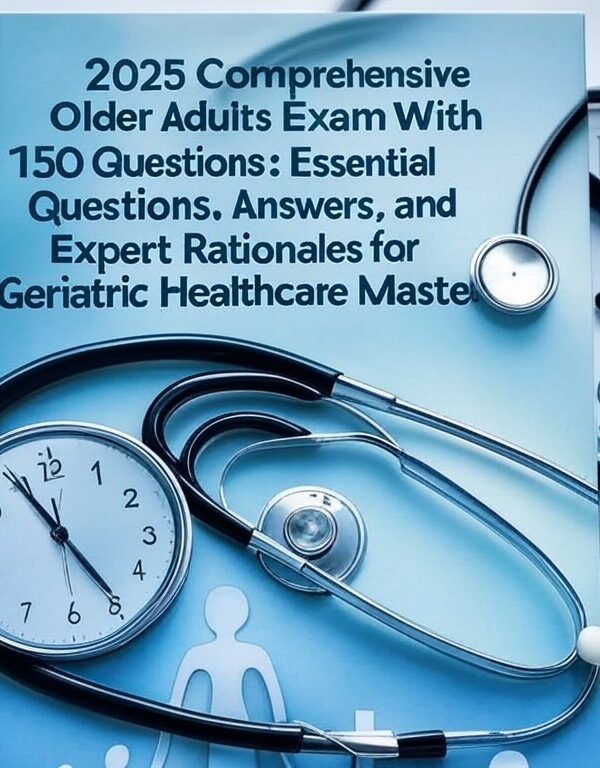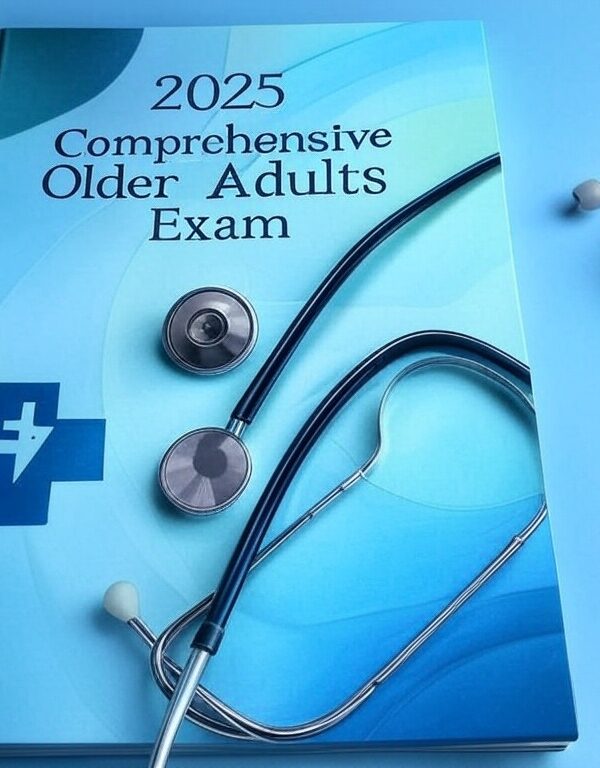-
Comprehensive study guide for ATI Med Surg 2025
-
100 practice questions to test your knowledge
-
Key strategies for exam success
-
Ideal for nursing students preparing for the proctored exam
-
Enhances critical thinking and test-taking skills
Preview
1. A nurse is assessing a client who is near the end of life following a head injury.
The client has alternating periods of rapid breathing and apnea. What respiratory
pattern should the nurse document?
• a. Biot’s respirations
• b. Hypoventilatory respirations
• c. Kussmaul respirations
• ✅ d. Cheyne-Stokes respirations
Rationale: Cheyne-Stokes respirations are marked by a cyclical pattern of increased
rate and depth followed by a period of apnea. This often occurs with increased
intracranial pressure or at the end of life.
2. A nurse is administering a unit of packed RBCs and notes several small clots in
the IV bag. What should the nurse do?
• a. Inject 5,000 units of heparin into the unit
• b. Place the unit in a warming device for 5 min
• ✅ c. Return the unit to the blood bank
• d. Dilute the unit with lactated Ringer’s
Rationale: The presence of clots indicates the unit is compromised and unsafe. It must
be returned to the blood bank to prevent harm.
3. A nurse is teaching a client about GERD self-management. Which instruction is
appropriate?
• a. Eat a light meal 1 hour before bedtime
• b. Lie down for 30 minutes after meals
• c. Increase caloric intake by 250 calories/day
• ✅ d. Sleep with the head of the bed elevated 6 inches
Rationale: Elevating the head of the bed reduces nighttime reflux. Clients should also
avoid meals 2-3 hours before bedtime.
4. During peritoneal dialysis teaching, which finding should the nurse identify as
the earliest sign of peritonitis?
• a. Generalized abdominal pain
• b. Cloudy effluent
• ✅ c. Fever
• d. Increased heart rate
Rationale: Fever is typically the first systemic sign of peritonitis. Cloudy dialysate often
follows but is not the earliest.
5. A client is receiving enteral nutrition. Which action helps prevent aspiration?
• a. Check gastric pH after feedings
• b. Place the client in supine position
• c. Instruct to do the Valsalva maneuver after feedings
• ✅ d. Measure residual volume prior to feedings
Rationale: Measuring residual volume helps evaluate gastric emptying. Clients should
also be upright during and after feedings.












Reviews
There are no reviews yet.